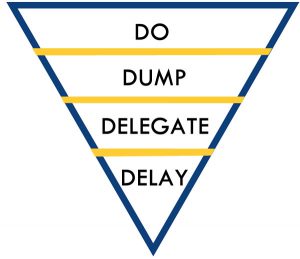A couple of weekends ago, three dear friends from Indiana came for a visit: Charlene, who was my executive assistant in the Department of Pediatrics at the IU School of Medicine; Lori, who was my nurse at Riley Hospital for Children and; Linda, my former fellow who is now a very successful pediatric endocrinologist.
Listening to stories about Linda’s children got me thinking about when my children were young. The approach of summer always meant that I had to schedule more activities for my kids. This, of course, meant it was a good time for me to take a look at my own schedule and make sure that I could effectively be both Mom and doctor. While not always an easy task, it is certainly one of the most important.
Work-life balance is fundamental to our physical, mental and emotional wellness, as well as our productivity in – and satisfaction with – our professional and personal lives. In my experience, the key to balancing work and life effectively comes down to time management. Over the course of my life and career, I’ve found that the best strategy for time management is following the Pareto Principle.
In the early 1900s, Italian economist Vilfredo Pareto noticed that 80% of the land in Italy was owned by 20% of the population. This observation led him to create a mathematical formula to describe this unequal distribution of wealth. That formula was the basis on which many of the past century’s economists and scientists have looked at distribution patterns in other areas, including: height and weight; grades (Bell Curve); population trends; social behaviors; business practices; and more. In health care, the Pareto Principle – or what is more commonly known today as the 80/20 Rule – plays out in the assertions that 80% of health care dollars are spent on 20% of the population and 80% of complaints come from 20% of patients.
The point is that most things in life are distributed unevenly, including our To Do lists. That’s where the Pareto Principle and time management intersect. Typically, 80% of the value from our work comes from only 20% of the items on our To Do lists.
Essentially, this means that we should focus our energy and time on the 20% of tasks that result in 80% of the value – the ones that are most vital and yield the greatest return on investment.
Of course, just invoking the name of Pareto won’t make the less valuable 80% of tasks on your To Do list magically disappear. You need a strategy for managing those items, as well. One of the most successful strategies I’ve used is the 4Ds: Do; Dump; Delegate; Delay.
 DO: This applies to those tasks that support your most valuable work – the vital 20%. Deal with e-mails, documents, phone calls regarding priority issues as soon as they come across your desk, your inbox or your voicemail. I call this “handle paper once.” This way, you stay on top of your priorities, you keep important projects moving and you don’t amass a daunting load to deal with at another time. That other time might be a long way off.
DO: This applies to those tasks that support your most valuable work – the vital 20%. Deal with e-mails, documents, phone calls regarding priority issues as soon as they come across your desk, your inbox or your voicemail. I call this “handle paper once.” This way, you stay on top of your priorities, you keep important projects moving and you don’t amass a daunting load to deal with at another time. That other time might be a long way off.
DUMP: If something comes across your desk that doesn’t pertain to your priorities, doesn’t require follow up and doesn’t support your goals, do you really need to keep it? Probably not — DUMP it!
DELEGATE: If a task requires attention or action but doesn’t make your “Do” list, can/should someone else handle it? Is it on another person’s “Do” list? If so, move it along.
DELAY: Very few things should make it to the Delay pile. But, on occasion, there may be something you want to review later. If so, file, print or store it for another time.
Of course, there is no one-size-fits-all solution to time management or work-life balance. As our lives change, our priorities change and the balance we need changes, too. The 4Ds strategy has worked for me for many years, so I continue to use it. In fact, I revisit it almost daily to make sure I am on track. It has worked for others, too, so I wanted to share it in case it might help you, as well.
I once came across this proverb: Ordinary people think merely of spending time. Great people think of using it.
Find the formula and strategies that help you best use your time and achieve maximum work-life balance. Your health and well-being are important to me and to your team, and they are vital to the productivity of our Health System.
If you have successful time management or work-life balance strategies or tools that you’d like to share, post them here as a comment.
